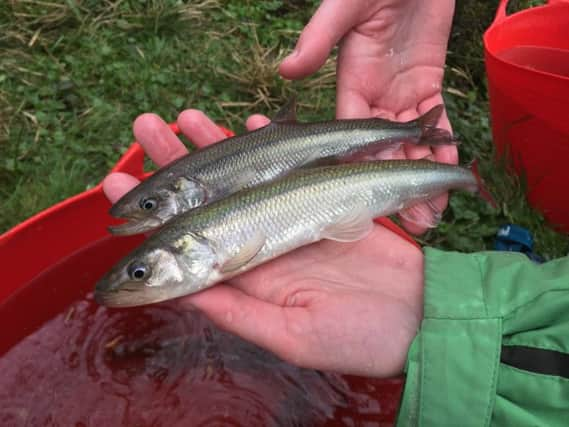Rare ‘cucumber smelling’ fish is saved from extinction in Scotland


The silvery sparling was once so abundant that the rivers were seen to “boil” as massive shoals thrashed around in a bid to get upstream to spawn during their annual migration.
Children would wade into the shallows and grab them out of the water with their bare hands to take home for a special family dinner.
Advertisement
Hide AdAdvertisement
Hide AdThe species, considered a delicacy, was so plentiful it supported a lucrative fishing industry and was exported to markets as far away as the south of England.
All this occurred over just a few days each spring, with annual catches of up to six tonnes – an estimated 40,000 fish – reported.
Things are very different today.
The sparling, also known as smelt or spurlin’, is a distant relative of the salmon and was once found in 15 Scottish rivers.
But it has suffered a massive decline over the past 150 years, caused by a combination of overfishing, industrialisation and the building of impassable barriers.
Now sparling, which grow up to a foot long, are known to survive in only three rivers in Scotland – the Cree, the Forth and the Tay.
Not much is known about the two east coast populations but experts have been studying the fish in the River Cree, in Dumfries and Galloway, in an effort to understand more about their behaviour and help ensure their continued survival.
Galloway Fisheries Trust (GFT) has launched the Saving the Sparling project, a two-year scientific and educational initiative aimed at restoring the local population.
Ocean science graduate Courtney Rowland is just coming to the end of a five-month internship with GFT in Newton Stewart, where she has been working on the final phase of the project.
Advertisement
Hide AdAdvertisement
Hide AdAs well as collecting environmental and biological data and monitoring the fish, Rowland has organised community events and visited local schools to bring the sparling back to prominence in the area.
She believes losing the sparling in the south-west of Scotland would be a travesty.
“Biodiversity-wise,” she says, “the sparling is very important in the Cree but they also have huge cultural significance to the area.”
She said: “In times gone by locals would fetch sparling by the bucketful. It was an annual tasty treat.
“But all that has been long forgotten,so part of the project has been about reconnecting the community with that heritage.”
The lower Cree, where sparling spawn, has been designated a Site of Special Scientific Interest to protect the rare fish, its water quality improved and the size of its weirs reduced.
Sparling spend most of their lives at sea but are relatively weak swimmers, relying on high spring tides to help them move from the estuary upriver to breed.
Due to their shoaling nature, they are easily picked off by predators such as seals, otters, herons and cormorants during this time.
Advertisement
Hide AdAdvertisement
Hide AdThe population remains fragile, estimated at around 15,000 fish, but it’s hoped this can soon be increased to a more robust 25,000 or more.
If all goes well and funding can be secured, GFT has plans to one day reintroduce sparling to nine waterways in the region where they were previously found – the rivers Annan, Bladnoch, Dee, Fleet, Girvan, Lochar, Nith, Stinchar and Urr.